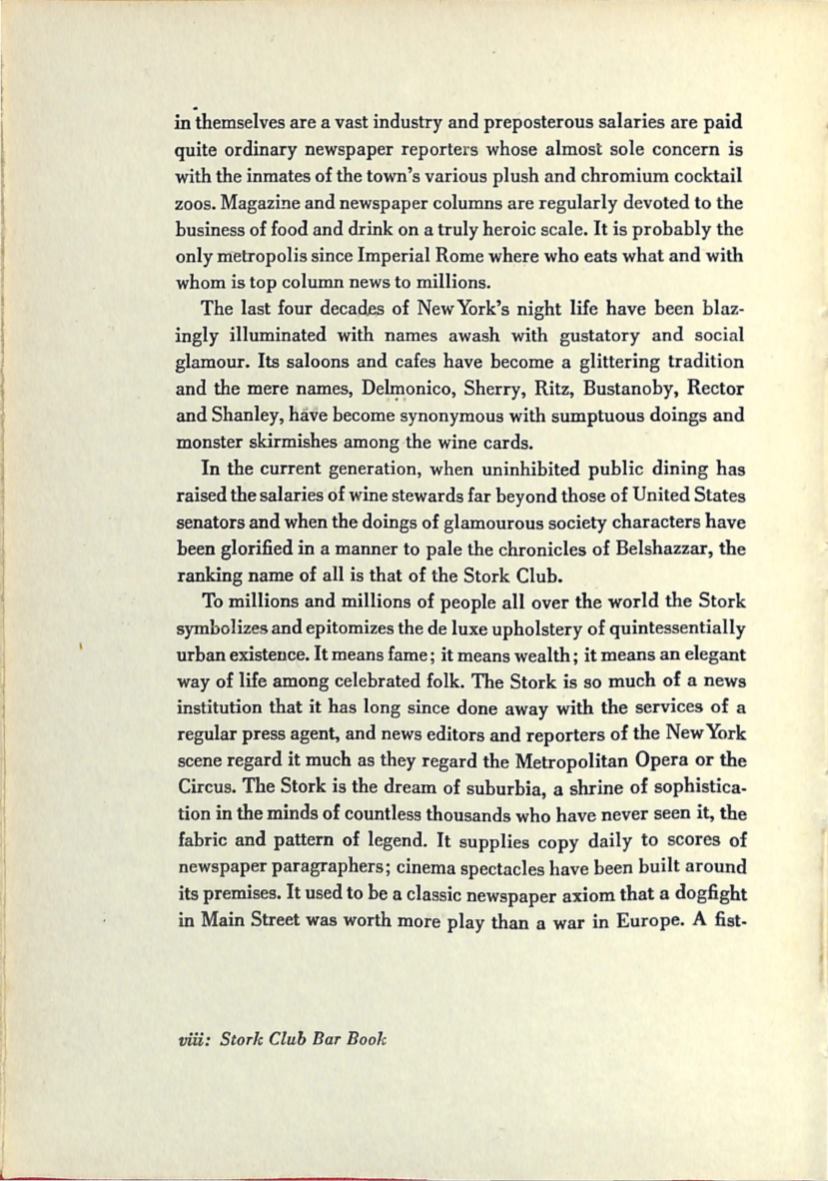

in
·themselves are a vast industry and preposterous salaries are paid
quite ordinary newspaper reporters whose almost sole concern is
with the inmates of the town's various plush and chromium cocktail
zoos. Magazine and newspaper columns are regularly devoted to the
business of food and drink on a truly heroic scale. It is probably the
only m-etropolis since Imperial Rome where who eats what and with
whom is top column news to millions.
The last four decades of NewYork's night life have been blaz–
ingly illuminated with names awash with gustatory and social
glamour. Its saloons and cafes have become a glittering tradition
and the mere names,
De~onico,
Sherry, Ritz, Bustanoby, Rector
and Shanley, have become synonymous with sumptuous doings and
monster skirmishes among the wine cards.
In the current generation, when uninhibited public dining has
raised the salaries of wine stewards far beyond those of United States
senators and when the doings of glamourous society characters have
been glorified
in
a manner to pale the chronicles of Belshazzar, the
ranking name of all is that of the Stork Club.
To millions and millions of people all over the world the Stork
symbolizes and epitomizes the de luxe upholstery of quintessentially
urban existence. It means fame; it means wealth; it means an elegant
way of life among celebrated folk. The Stork is so much of a news
institution that it has long since done away with the services of a
regular press agent, and news editors and reporters of the NewYork
scene regard it much as they regard the Metropolitan Opera or the
Circus. The Stork is the dream of suburbia, a shrine of sophistica–
tion in the minds of countless thousands who have never seen it, the
fabric and pattern of legend. It supplies copy daily to scores of
newspaper paragraphers; cinema spectacles have been built around
its premises. It used to he a classic newspaper axiom that a dogfight
in Main Street was worth more play than a war in Europe. A fist-
viii:
Stork Club Bar Book














